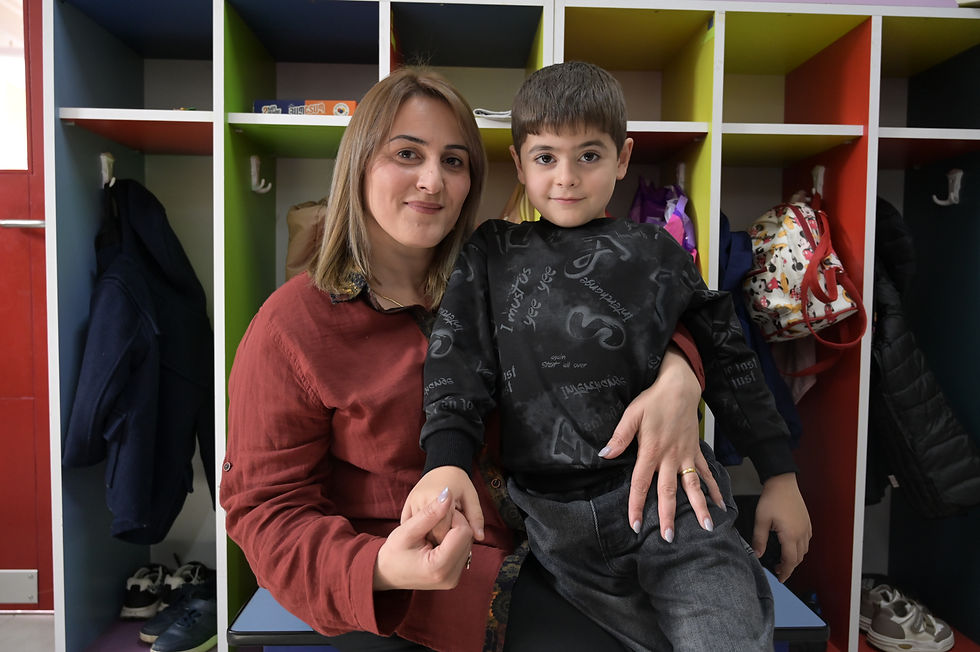The Dream of Yergir.
- Naira Hambardzumyan
- May 1, 2011
- 4 min read

“I miss Western Armenia, Kars, our Church.”
- Heghine Abrahamyan
I saw a picture at my friend's house, a painting of reddish flowers and fruits. My friend told me the artist was Heghine Abrahamyan. I soon found out that for 30 years this woman had taught painting at Panos Terlemezyan College of Fine Arts. She taught such famous Armenian artists as Gregory Khanjian, Levon Kojoyan and Rafael Atoyan. A witness to the genocide, she is now 102 years old. I couldn’t resist calling her and I persuaded her to let me come over and conduct an interview.
When I arrived, she opened her door slowly. I stepped inside and suddenly it seemed as if I had entered another world. Then, she told me her story.
“I was three years old when our family was first deported from Ardahan. But I don’t remember it. I only remember that my father took us to Yerevan. He was a soldier in the Czar's Army and they appointed him to the military supplier unit of Yerevan. In 1918, my mother died, after which my aunt took me and my brother to Kars,” she said.
Then she paused. Heghine covered her face with her hands and the room was silent. Then she angrily looked at me and shouted: “Do you understand what we have lost? Man is alive with these memories! We are allowed no recollection of our homeland. They erased our story. They ruined our monuments ...” She trailed off.
“By the time we got to Kars, the massacres had begun with new force. The Turks had prohibited the Armenians from leaving the city, but my father was a military servant and so we were allowed to collect our belongings and leave. My aunt went to the station to arrange things. She then she returned, confused. Turks had occupied the station; the train had left with our things inside. We lost our possessions again.
“At the time my father was not with us. He was probably at the military unit. I remember my aunt acquired a car and we drove to the valley road. When we reached the valley, we faced a terrible scene: panic-stricken people were running away. A bit later, that area was so filled with people that it was impossible to move forward in our car and we remained at a standstill in the crowd. This time, the Turks found the proper moment to massacre people. They climbed up hills to look over the valley and from there they began to shoot. I remember losing consciousness.
“When I awakened, our car was empty. My family was gone except for my cousin, four-year-old Tsoghik whose lifeless body lay beside me. There was a Kurdish woman nearby and she took me with her. When describing those days, people sometimes say, ‘Mothers had left their sons to be saved.’ My family had left me, too. People did not understand what was going on. They were running away. Where to? And how? No one knew. They just ran, ran away. We did the same. With my savior, we reached the bridge known as “Hair” because it was thin and narrow, difficult for any soul to pass over.
“The Turks were firing from the front and people could not run back. The crowd was forced to pass that bridge. Those who were killed fell into the water and the river turned purple with blood. I lost the Kurdish woman on the way across, but a man took me to a crumbling building where people were huddled against each other — thousands of refugees. It was there that I finally found my family.

Later, when the shooting stopped, they heard that the road to Kars was open. Heghine and her relatives returned. “We went to Kars Apostles Church, to my grandpa. A few days later, my other aunt, who was working at the American orphanage in the Kars, took my brother and me to there.
“We stayed in Kars until 1921, when the Americans decided to take orphans away. They put us on the train to Gyumri. Children died on the train, my aunt told me. And when they did their bodies were thrown off to avoid the spread of any epidemic,” Heghine said.
I asked Ms. Heghine about her views on Armenian-Turkish relations. “I don’t believe the Turks. They can’t be changed. You have not seen Kars,” she said. “But now I'm telling you about Kars and your eyes are filled with tears. Your heart is beating fast now. That’s it: nostalgia, transferred to you through your genes. Your children will inherit nostalgia for their homeland, and so will your grandchildren. The chain of missing will continue until Western and Eastern Armenians will be together again. The longing for Yergir (the homeland) lives in every Armenian.

“The Turkish gene transfers hatred toward Armenians. I do not believe that the new generation of Turks is different. If they were not bloody and murderous, then our new generation would not have that nostalgia, and our hope of returning one day would die,” she said.
Heghine lives alone but her niece often visits and takes care of her. Her five cousins live in different countries around the world. They, too, have the hope of returning to their homeland in Western Armenia.
Naira Hambardzumyan is one of this year’s Margaret Ajemian Ahnert Scholars.




Comments